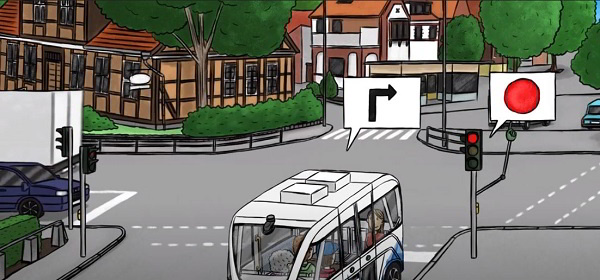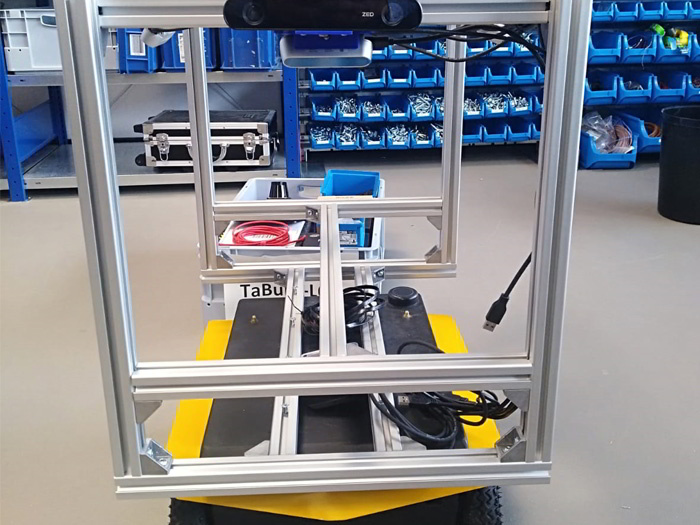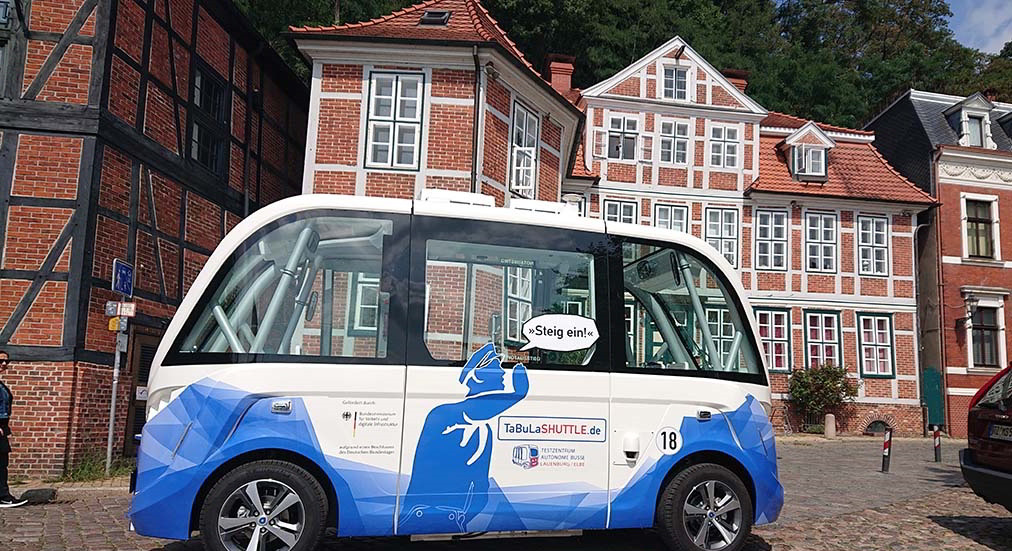Lauenburg/Elbe: a larger-than-life testing environment
If you travel to the small town of Lauenburg/Elbe in Germany, there’s a chance you’ll see a quite unique bus travelling through its streets: the TaBuLa shuttle.
The bus was created as part of a project managed by the Hamburg University of Technology (TUH) in collaboration with the Duchy of Lauenburg and funded by the Federal Ministry of Transport and Digital Infrastructure. Partners include the City of Hamburg, Verkehrsbetriebe Hamburg-Holstein and Siemens Mobility.

The aim of the TaBuLa project is to study use of automated vehicles running within a local public transport network . A test environment has been set up, which requires communication between the shuttle and the town’s traffic lights and automatic bollards. Passengers have already been travelling free of charge five days a week since October 2019.
The shuttle route connects the old town, which attracts lots of tourists, with the upper district.

Both neighbourhoods offer many environmental challenges , including uneven ground, cobblestones, high kerbs, narrow streets and wooded areas. The town therefore lends itself to this type of research and development project. The project began on 1 January 2018 and is scheduled to end on 31 December 2020.
How does the TaBuLa shuttle work?
The TaBuLa shuttle is:
- Automated
- Electrical
- Connected
- Free of charge
Connected
The https://www.TaBuLashuttle.de web page shows the exact location of the shuttle in real time , so you know when it will arrive at your stop.
Autonomous
The shuttle drives itself (although there is a driver on board for safety reasons).
The vehicle communicates with all the traffic lights in the town , which tell it when to stop and when to move forward.

The TaBuLa shuttle is equipped with sensors that continuously feed back information about its environment.
For example, if an obstacle suddenly appears in front of the shuttle, it stops immediately, and will only start again when it no longer detects anything.
It also adjusts its speed in relation to the vehicle in front of it, and always leaves a gap of 3 metres between the front of the shuttle and the rear of the vehicle ahead. TaBuLa operates at a maximum speed of 18 km/h .
The TaBuLa shuttle allows enough time for each passenger to board without rushing, and stops automatically at every stop.
TaBuLa-LOG project: automated transport and distribution of goods
In addition to transporting people, another project, named TaBuLa-LOG , has been launched to study the possibility of using the shuttle to carry goods.
The TaBuLa shuttle already serves the post office and some administrative buildings. Mail is transported by a robot . Because this robot “boards” the TaBuLa shuttle, it can travel longer distances and serve different destinations located far apart.
The TUH has equipped itself with 2 Jackal mobile robots for carrying mail and documents. These robots, designed by the Canadian manufacturer Clearpath Robotics , are known for being robust and efficient. And because they’re small, they don’t get in the way of the shuttle’s passengers while being able to carry up to 20 kg .

They have a good autonomy ( 8 hours ) and travel at a top speed of 2 m/s , allowing them to complete journeys rapidly.
Jackal robot by Clearpath Robotics:
- API: ROS, C++, Python
- Open-source
- Active community
- Numerous online resources
- Max. payload: 20 kg
- All-terrain payload: 10 kg
- Max. speed: 2.0 m/s
- Charge time: 4 h
- Autonomy in standard use: 8 h
- Standard use: 8 h
Equipped with a LiDAR and 4 3D cameras , these robots can navigate autonomously to transport mail to the right stops.
For the second phase of this project, there are plans to use a Husky robot capable of carrying heavier loads than the Jackal, in order to retrieve the mail and dispatch it between the different buildings. The Husky will serve a support role and be used only when large quantities of mail need to be delivered.
The Jackals are currently being programmed by TUH researchers to be able to perform all these tasks.
Real-world testing is expected to begin in the spring of 2021.
Check out our blog regularly to learn more about how this unique and innovative German project is progressing.

